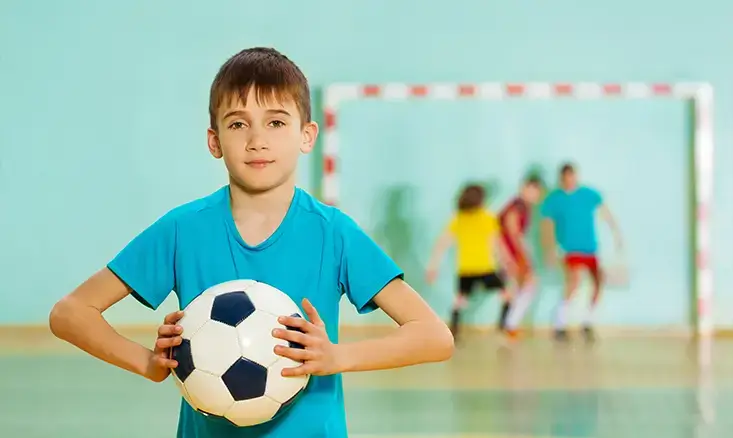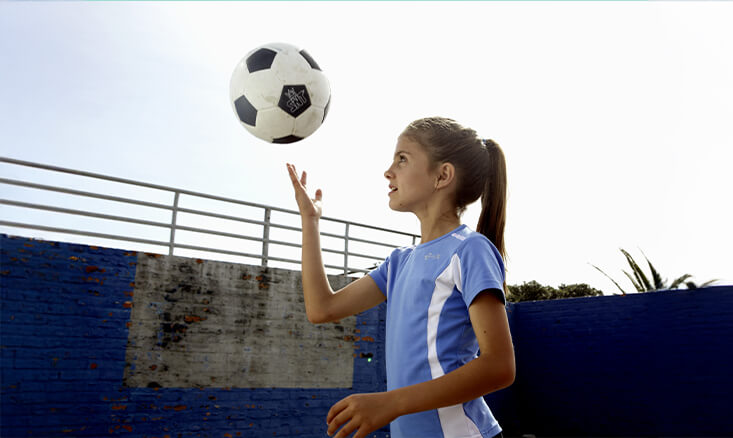CRFC BLOGS
LATEST BLOGS & NEWSLETTERS
Youth Soccer Drop Ball Rules
Understanding the rules of youth soccer is crucial for both players and parents, and one of the less common but important rules is the drop ball. While it doesn’t happen frequently, knowing the drop ball rules in soccer ensures that young Players are prepared when the situation arises. This Blog will break down the key aspects of the soccer drop ball rule as it applies to youth soccer, including recent rule changes and safety measures. By the end, you’ll have a comprehensive understanding of how drop balls work in youth soccer leagues.
What Is a Drop Ball in Youth Soccer?
A drop ball in youth soccer is a way to restart play after the game is paused for reasons unrelated to fouls or player infractions. This neutral restart is typically used when neither team has possession, and the referee drops the ball between players to resume play.
Why Are Drop Balls Important in Youth Soccer?
In youth soccer, drop ball rules are designed to ensure fairness and safety. Understanding these rules helps prevent confusion on the field when an unexpected stoppage occurs. For instance, if a referee stops the game due to an injury, a soccer drop ball restart is used to fairly resume play. Drop balls help maintain a neutral playing environment and ensure that no team gains an advantage from an unplanned stoppage.
Soccer Drop Ball Rule Change
When Is a Drop Ball Used in Soccer?
A drop ball in youth soccer is typically used when the game is stopped for reasons that don’t involve fouls or other player violations. Common scenarios where a drop ball might be used include:
- Injuries: If a player is hurt and the game needs to be stopped for medical attention.
- External Interference: If something from outside the field, like a ball or a fan, disrupts the game.
- Ball Hits the Referee: If the ball hits the referee and changes possession or affects a scoring opportunity.

These situations are where a soccer drop ball restart is essential for keeping the game fair and safe for all players.
Can You Score Directly from a Drop Ball?
One of the most frequent questions about the rules for drop ball in soccer is whether a player can score directly from it. The answer is no. According to the current drop ball rules of soccer, a goal cannot be scored directly from a drop ball unless it touches another player first. If the ball enters the goal without touching another player, the restart will be either a goal kick (if it goes into the opponent’s goal) or a corner kick (if it enters the player’s own goal). This ensures that drop balls remain neutral and do not unfairly impact the score.

Rules for Youth Soccer Drop Balls
Here’s a summary of the youth soccer drop ball rules to keep in mind:
- Neutral Restart: Drop balls are neutral, meaning either team can gain possession.
- Uncontested Drop: After the soccer drop ball rule change, only one player participates in the drop ball.
- Distance Rule: The opposing team must stand at least four meters away from the drop ball.
- No Direct Scoring: A goal cannot be scored directly from a drop ball unless it touches another player first.
These rules are designed to keep players safe by preventing collisions during drop balls.
Conclusion
The drop ball rules soccer might not be the most common situation in youth games, but they play an important role in ensuring fair and safe play. With the recent soccer drop ball rule change, the rules have become more focused on safety, especially for younger players. Knowing when and how drop balls are used ensures that youth players are prepared and can maintain focus during unexpected stoppages. Whether you’re a parent, coach, or player, understanding the rules for drop ball in soccer will help you navigate these situations smoothly and safely.
FAQs
What is a drop ball in youth soccer?
Can you score directly from a drop ball in soccer?
What is the recent soccer drop ball rule change?
Can a goalkeeper pick up a drop ball?
Why are drop balls important in youth soccer?

Did you find this useful?


